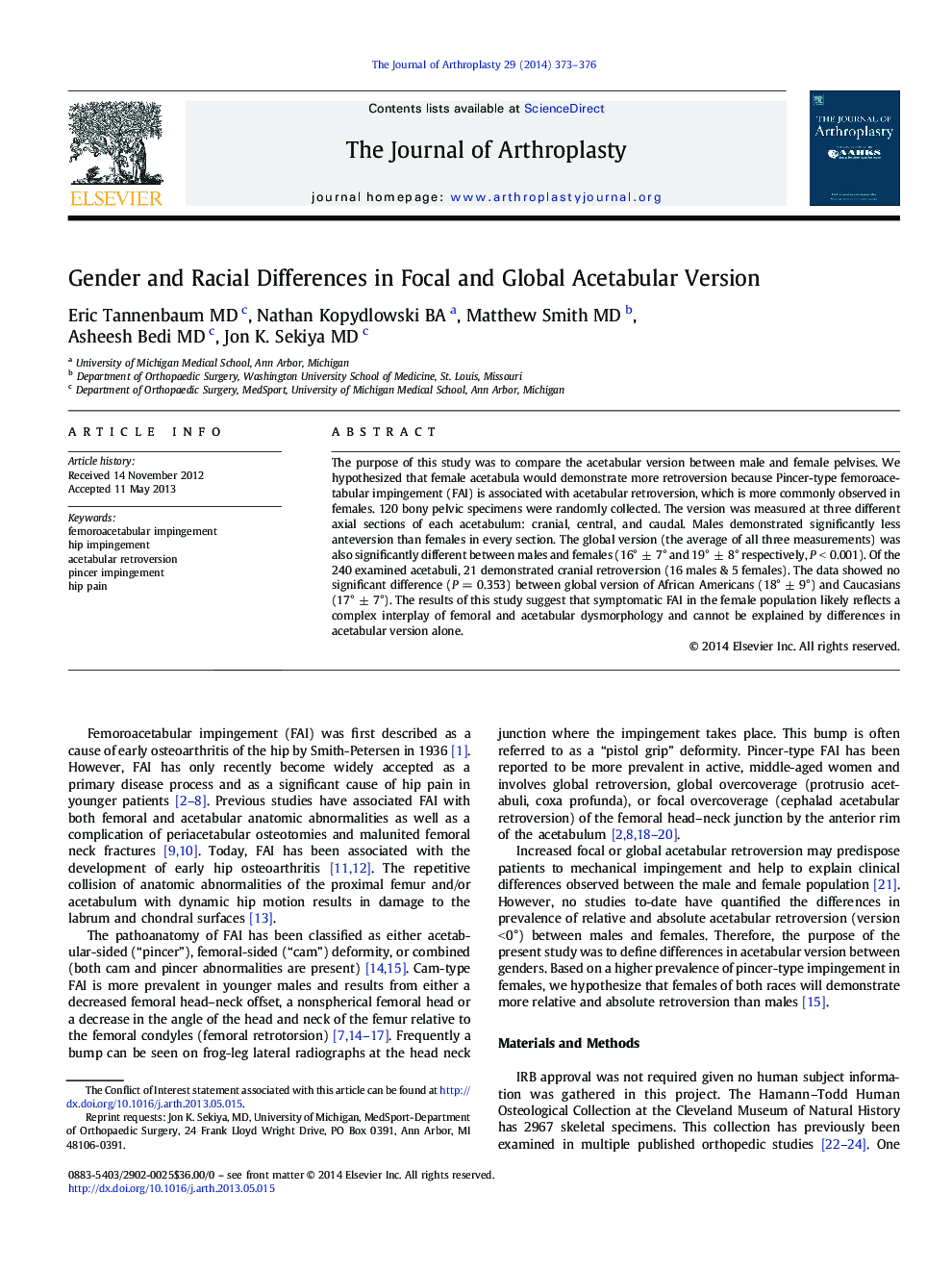| Article ID | Journal | Published Year | Pages | File Type |
|---|---|---|---|---|
| 6209912 | The Journal of Arthroplasty | 2014 | 4 Pages |
The purpose of this study was to compare the acetabular version between male and female pelvises. We hypothesized that female acetabula would demonstrate more retroversion because Pincer-type femoroacetabular impingement (FAI) is associated with acetabular retroversion, which is more commonly observed in females. 120 bony pelvic specimens were randomly collected. The version was measured at three different axial sections of each acetabulum: cranial, central, and caudal. Males demonstrated significantly less anteversion than females in every section. The global version (the average of all three measurements) was also significantly different between males and females (16° ± 7° and 19° ± 8° respectively, P < 0.001). Of the 240 examined acetabuli, 21 demonstrated cranial retroversion (16 males & 5 females). The data showed no significant difference (P = 0.353) between global version of African Americans (18° ± 9°) and Caucasians (17° ± 7°). The results of this study suggest that symptomatic FAI in the female population likely reflects a complex interplay of femoral and acetabular dysmorphology and cannot be explained by differences in acetabular version alone.
